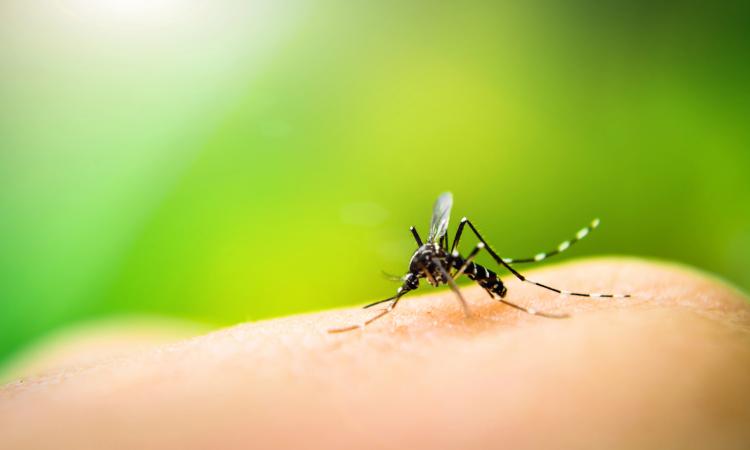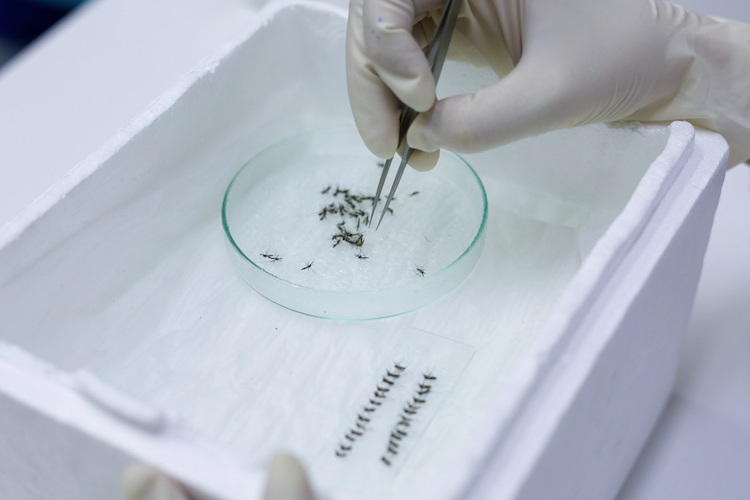Should We Kill All the Mosquitoes? A Conservationist’s Dilemma

Mosquito-borne diseases cause nearly a million human deaths each year, making mosquitoes, by far, the deadliest animals on Earth. They spread dengue, Zika, chikungunya, yellow fever, West Nile virus, and malaria. Given how deadly they are and how annoying they can be at a braai or on a trek through nature, “let’s just wipe them all out” can feel less like a line from a Bond-villain and more like common sense.
But suppose we could kill all the mosquitoes. Should we?
In the last two decades, the fight against mosquitoes has moved from citronella candles to high tech, and the question of whether we can get rid of all mosquitoes has become a live one. Two new methods for dealing with mosquitoes have recently gained traction. One, used by the World Mosquito Program (WMP), gives mosquitoes a naturally occurring bacterium, Wolbachia, which blocks viruses inside the insect. When enough Wolbachia-carrying mosquitoes become established, the local population still buzzes, but it can’t transmit diseases like dengue or Zika. The other method, used by biotech firms like Oxitec and Target Malaria, releases genetically engineered male mosquitoes, which, when they mate with wild females, either render females infertile or prevent female offspring from maturing. Release enough engineered males, and local mosquito populations plummet.
Both technologies promise fewer funerals and fewer hospital bills. But only one is a license to kill. If we’re asking whether we should “kill all mosquitoes,” we’re mostly talking about eradication campaigns like Oxitec’s and Target Malaria’s.
However, before we reach for the big red button, two lessons are worth considering.
Lesson one: Think like a mountain.
In A Sand County Almanac (1949), conservationist Aldo Leopold tells a story about shooting a wolf and watching “a fierce green fire” die in her eyes. He said it was at this moment he realized he hadn’t been “thinking like a mountain.” What does that mean? Kill the wolves and you get more deer—for a season. But in the long-run you get overgrazing, starving herds, eroding hillsides, and a poorer forest. Ecologists now call that dynamic a “trophic cascade.”
Mosquitoes aren’t wolves. But “thinking like a mountain” means asking what else is hitched to them. The honest answer? Perhaps more than we’d like to admit. Some spiders and fish specialize in eating mosquito larvae. Many birds – particularly in the Arctic summer, where insects are a protein windfall – depend on them during crucial periods. A few plants even rely on mosquitoes to set seed. Remove a major food source or a pollinator, and you don’t just subtract bites; you tug on the web.
Will every ecosystem crash if we eliminate a disease-carrying population in one neighborhood? No. Would every system adapt if we eliminated mosquitoes everywhere? That isn’t clear. The challenge is scale and intent. WMP’s Wolbachia approach leaves local mosquito numbers roughly intact while eliminating their ability to transmit diseases. Ecologically, that’s a scalpel. Eradication by repeated releases of engineered males is a hammer. Hammers have their place, especially in urban settings where disease-carrying species are invasive. But we should be clear about what tool we’re using.
Lesson two: Mosquitoes help protect the wild.

I learned this years ago as a wilderness ranger in California’s Dinkey Lakes Wilderness. It’s one of the loveliest corners of the Sierra, and one of the buggiest. The mosquitoes are so relentless that even seasoned rangers have a hard time there. The payoff? Solitude. The very clouds of insects most people curse keep the Instagram hordes at bay. Fewer boots, fewer campfires, fewer trampled meadows. Mosquitoes effectively shield some fragile places from overuse.
You don’t have to love mosquitoes to see the dilemma. The more we scrub the nature of these miniature flying vampires, the easier we make it for ourselves to flood sensitive places, until the very wildness we treasure is gone.
One drought-stricken summer, a veteran supervisor told me she hadn’t seen a single mosquito in the Dinkey. For locals, that wasn’t cause for celebration; it was a red flag but for another reason. No mosquitoes meant deep, unusual dryness – an omen of the catastrophic wildfire season that followed. Mosquitoes are an effective “canary in the coal mine” for wildfires. Strip them from a landscape and you also lose a cheap, reliable, and widely distributed bioindicator – one not easily replaced – that helps land managers anticipate trouble.
What about animal ethics?
Do mosquitoes feel pain? Scientists are unsure. Even if they don’t, most of us agree that gratuitous cruelty is wrong. The Wolbachia method doesn’t appear to make mosquito lives worse, but eradication methods are different. In Oxitec’s case, they’re engineered to produce female offspring that die young. Does that matter morally? We’re designing a reproductive failure into a species and, if scaled up, aiming at local extinction. When the target is an invasive, human-adapted pest in a city, that may be justified. As a planetary principle, however, that’s a different conversation.

So, should we kill them all?
I think the answer is no. A blanket elimination of mosquitoes would be reckless. It would risk unanticipated ecological cascades; would erase a surprisingly useful bioindicator; and would degrade the character of wild places by removing one of the few natural guardians against our constant presence.
But should we continue to disarm mosquitoes? That seems more acceptable. If we can render mosquitoes in Rio or Jakarta incapable of carrying dengue, the overall risk may be worth it. If we can suppress a small, localized, invasive population near a hospital or school – and have robust monitoring to prevent spillover – that might also be okay. Our ethical north star ought to be precaution with purpose: save human lives while minimizing ecological collateral.
That means at least three practical commitments.
First, we should prefer replacement over eradication where feasible.
Wolbachia is boring in the best way: it lets mosquitoes keep being mosquitoes – food for fish, prey for swallows, incidental pollinators – while eliminating their viral payload. As a default, that’s better for ecosystems.
Second, we must keep it narrow and accountable.
Target invasive species in dense urban zones. Require transparent environmental monitoring, independent oversight, and public reporting. If the released genes begin to spread beyond the target area or species, pull the plug.
Third, we need to protect the last refuges.
If you “liberate” high-country basins and tundra wetlands from mosquitoes, don’t be surprised when you liberate humans too. Programs that make wild places more comfortable need to be paired with stricter permit quotas, seasonal closures, and funding for enforcement. Otherwise, we’ll love those places to death.
The honest, mature answer to the mosquito problem is not a glorious global purge. It’s a patchwork of local strategies guided by humility: a recognition that even creatures we despise are often stitched into stories bigger than our own. By all means, take the needle out of the mosquito’s hand. Just don’t torch the tapestry to do it.
Clicking affiliate links may earn us commission. Stock images by Depositphotos.
Subscribe: Stories about wildlife, habitats and heroes
Welcome to Conservation Mag where we celebrate nature preservation through ecotourism and wildlife travel while we look for ways to preserve our heritage by supporting nature conservation. Starting conversations about the positive action people like you and I are taking to make a change.
Quick Links
Work With Us
![]()

